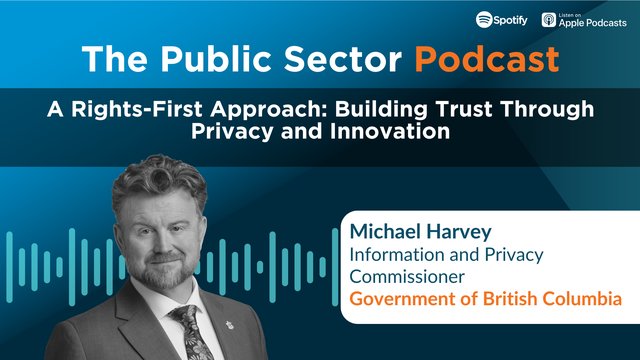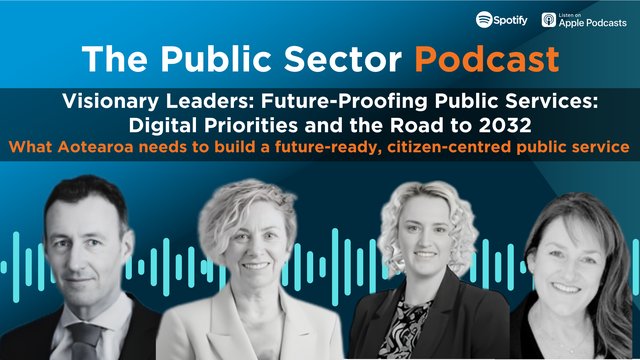
To start off, we have some good news – it looks like the Australian government is moving towards an upward trajectory when it comes to the amount of trust the public has in its digital services.
Australians' trust in digital government services has been growing, with a vast majority engaging with a range of digital platforms:
- The 2023 Trust in Australian Public Services Annual Report found that 73% of people reported trusting specific services they had used in 2023, which was the same as in 2022
- 61% of people reported trusting public services which was also the same as in 2022
- The Publicis Sapient Digital Citizen Report 2023 found that 94% of Australians have accessed at least one online government service, which points towards an increased widespread adoption and confidence in digital interactions with the government
- Australia ranked 5th in its first participation in the OECD Digital Government Index (DGI) in 2023, scoring massively above the OECD average and scored especially high (97%) in the "Digital by design" dimension, which explores the country’s readiness to adopt digital tools to make citizen interaction easier
- The OECD Survey on Drivers of Trust in Public Institutions showed that Australians' trust in the federal government increased significantly from 38% in 2021 to 46% in 2023
While these are encouraging stats, on the other hand, data privacy and security concerns are still ever-present:
The Australian Community Attitudes to Privacy Survey 2023 highlights that:
- Only 32% of Australians feel in control of their data privacy
- 19% are uneasy about their personal data being stored on government databases
- 91% of Australians are concerned about the prospect of their personal data being sent overseas
- 58% of Australians say they do not understand how their personal information is used by organisations
- 89% of Australians want the government to provide more legislation in the area of privacy protection
The results highlight a clear paradox: Australians' trust in government services, and in government overall, is rising more than ever before. Yet, many citizens remain hesitant to share their personal information with these "trusted" services. Interestingly, the same individuals often provide personal data to non-government apps and websites with little hesitation. This suggests that decisions about privacy may be influenced more by the perceived value of the service than by its inherent trustworthiness.
To understand how the APS may reconcile these conflicting results, firstly it’s crucial to learn how our government comes to these statistical conclusions. From there, we can identify ways to improve specific stats that are especially low.
Key Metrics to Work Out Public Trust Levels:
- Transparency in relation to the availability of public data, government communications, and accountability mechanisms (e.g., audits and reports)
- Comparative participation in digital services across different demographics (age, gender, location etc)
- Customer satisfaction with digital and in-person services through feedback loops and surveys
- Sentiment analysis of government competence, integrity and responsiveness through incidents of corruption and government's ability to resolve issues effectively and promptly
- Measure data privacy and security through metrics on data breaches, privacy policies and government’s transparency through these issues
How Exactly Does Government Collect This Information?
Customer Experience (CX) Assessments: The government systematically evaluates public interactions with its services through surveys to identify areas for improvement – such as the Australian Public Service Commission's "Trust in Australian Public Services" report from which we learned clear statistics earlier. When looking at specific states, the Customer Experience Unit of Service NSW for example, uses customer experience insights to drive service improvements and solutions, inform policy, and monitor and evaluate solutions.
Sentiment Analysis: By looking at feedback from surveys, social media, and other sources, the government can quickly understand public opinion, and spot new issues that need attention. For example, the Department of the Prime Minister and Cabinet conducted surveys to understand community views on the use of artificial intelligence in public service delivery, filling a gap in knowledge of community sentiment.
Behavioural Economics: The Behavioural Economics Team of the Australian Government (BETA) applies behavioural insights to policy design, aiming to improve public trust and service effectiveness. Policies are then created that resonate with the public because they have been aligned with real human behaviours and expectations. A great example of their work is the study on unconscious bias in the APS.
International Collaborations in Trust Surveys: Great opportunities to measure people’s confidence in their governments across the globe and to learn what factors drive public trust such as government responsiveness, reliability, integrity, fairness and openness. The OECD for example, conducts the “Drivers of Trust in Public Institutions” that we mentioned earlier, every two years across member countries. These surveys enable countries to adopt comprehensive strategies for building trust.
Are trust results considered when the government undertakes new digital initiatives? How can our government alleviate public concerns about their data?
Recognising that trust is essential for the successful adoption of digital services, the government has integrated measures to enhance transparency, security, and accountability into its policies and decision-making processes:
- To address these concerns and enhance trust, the Australian Government has implemented strategies focusing on transparency and security. The Data and Digital Government Strategy for example, outlines a vision to deliver simple, secure, and connected public services through world-class data and digital capabilities. A key mission of this strategy is to build and maintain public trust by ensuring that digital services are secure and that personal data is handled responsibly.
- The government has also introduced the Policy for the Responsible Use of AI in Government, which emphasises transparency and accountability when rolling out and using AI technologies. This policy aims to strengthen public trust by providing clear guidelines on the ethical use of AI in government services.
- Finally, the adoption of a new whole-of-government Data Ethics Framework will be released soon in 2025, with the dominant goal of building and maintaining public trust. The new framework will include strict privacy settings and more rigorous steps taken to keep personal information safe.
Public trust in government is building, but there is always more work to be done – and consistently so.
Recent data tells us that in general, the Australian public is slowly but surely coming around to exercise trust in their government. Our government has been prioritising transparency and solid data security measures now more than ever, to foster public trust in its digital initiatives. We’ve now seen clearer privacy policies, data ethics frameworks, and increasingly more secure systems.
The government has reassured its citizens that their personal information is managed responsibly with compliance with data protection standards and the promotion of open data initiatives to keep the public informed, but these efforts need to be increased according to those surveyed and ongoing to maintain and enhance this trust. Recent data has also shown us that many people are still unsure about how their data is used and that public service delivery isn’t necessarily up to par. But with the current measures in place to determine levels of public trust and if the necessary action is taken when less than desirable results are found, public trust should continue to rise – let’s trust in that.

































